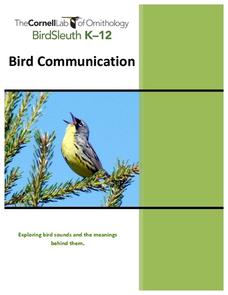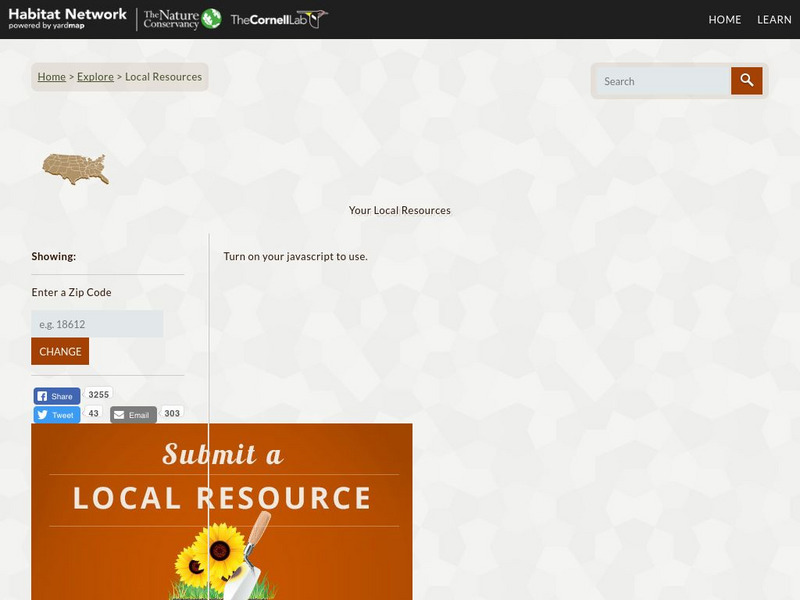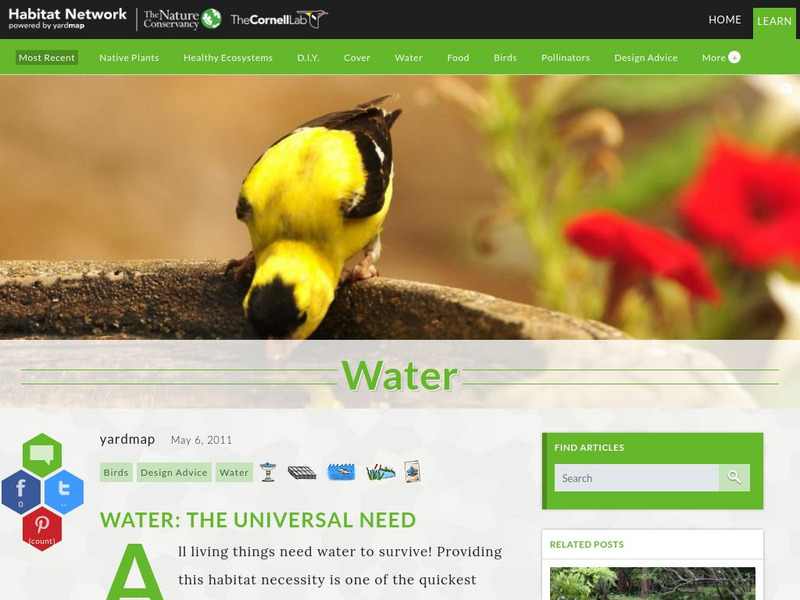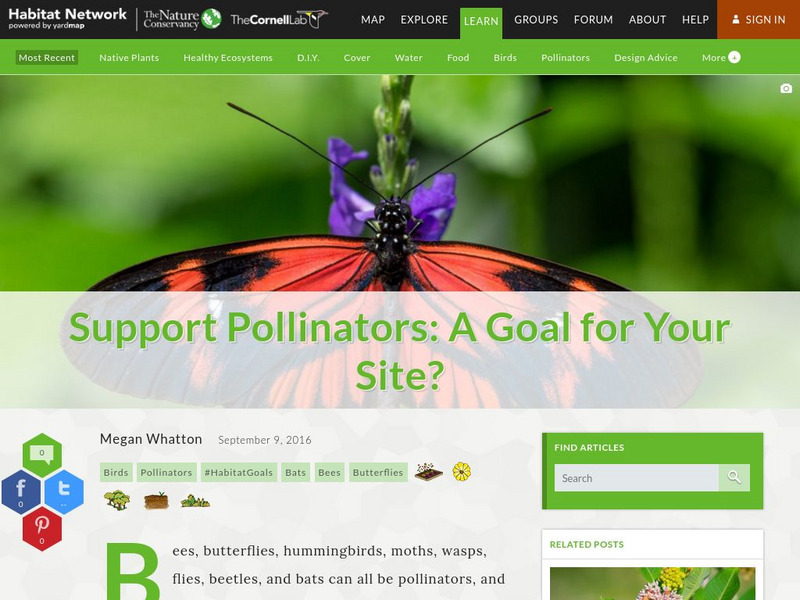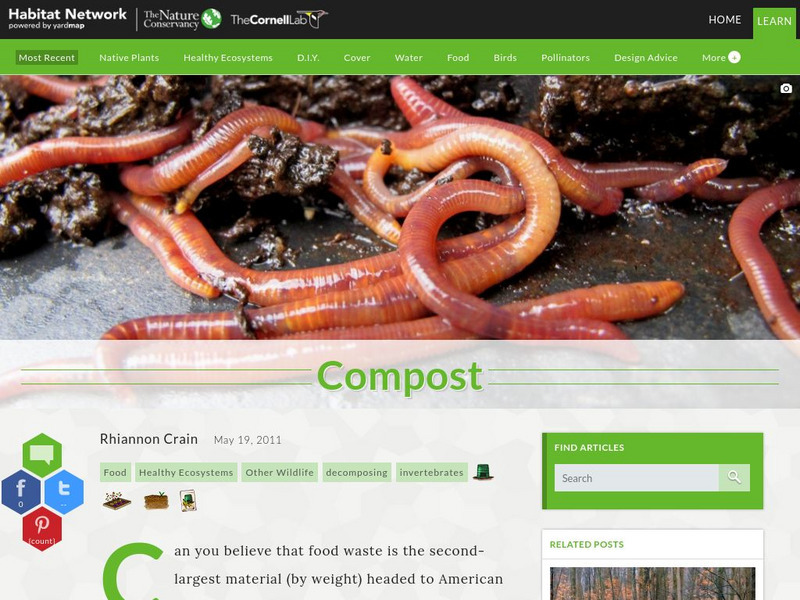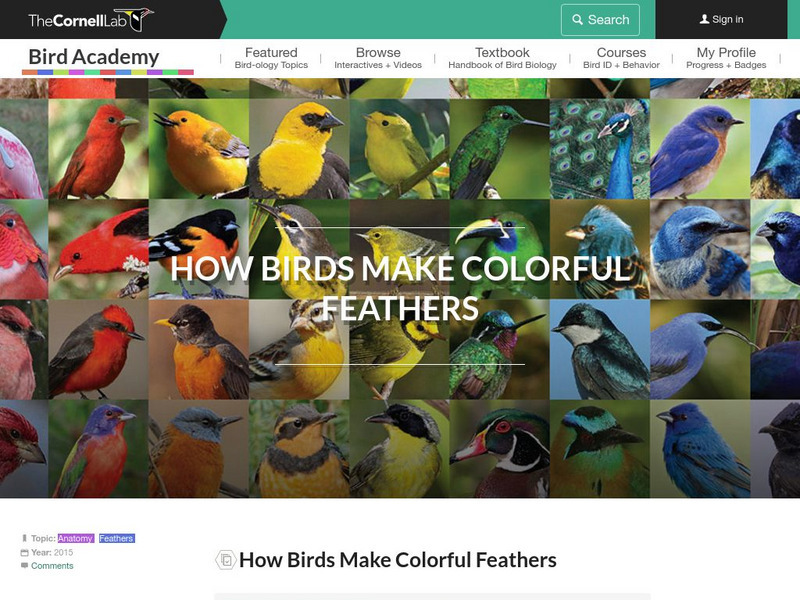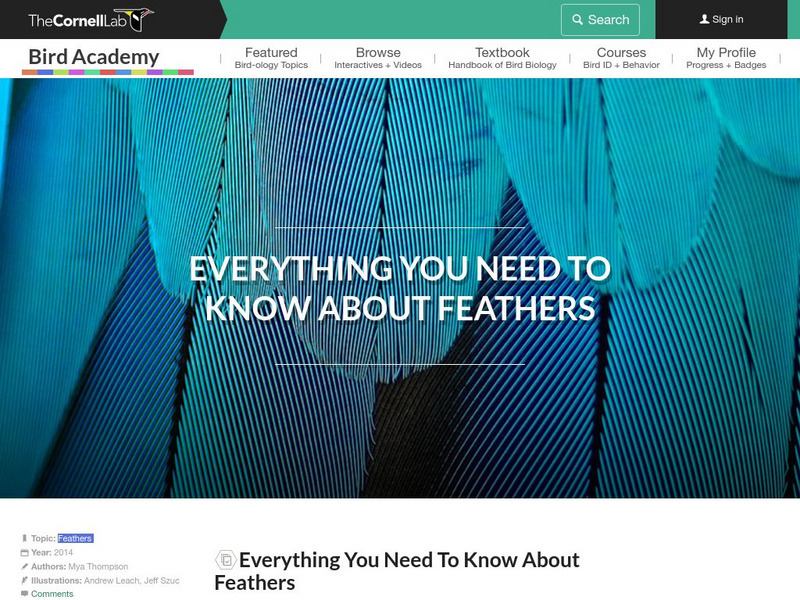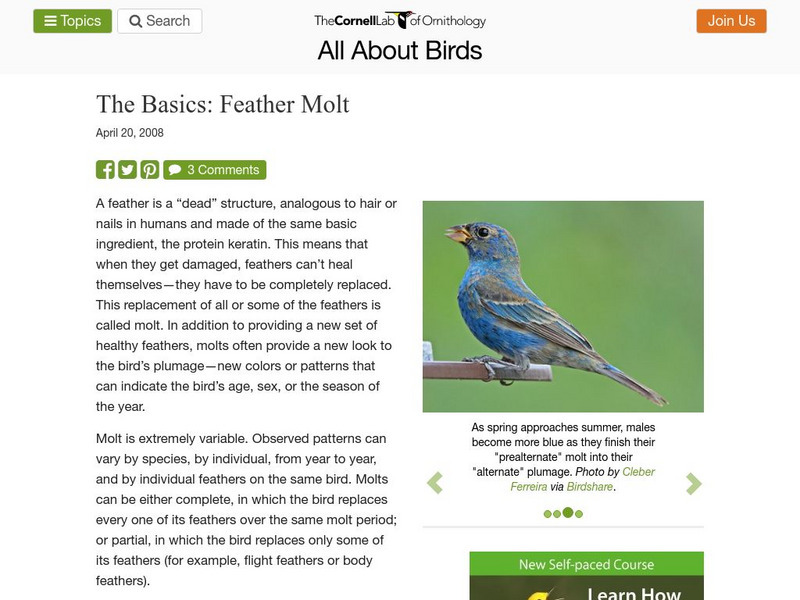Cornell Lab of Ornithology
Jump, Glide, or Fly? Exploring Bird Evolution
How have birds evolved from prehistoric animals? With the three-part lesson, small groups first research different prehistoric animals and determine whether they are birds. Then, scholars explore different bird adaptations using the Flap...
Cornell Lab of Ornithology
Amazing Birds
What's so amazing about birds? Find out just how amazing birds are with a physics of animal behavior unit created by Cornell Lab of Ornithology. Have learners explore and tap into their observational skills and notice how birds fly, what...
Cornell Lab of Ornithology
Bird Communication
Sing for your dinner! Investigate the purpose of bird songs and strategies birds use to communicate. Through the lessons, individuals learn how to recognize different types of bird communication as well as hypothesize the purpose of...
Cornell Lab of Ornithology
Life In A Nest: Exploring Life Cycles With Bird Cams
Why read about it when you can watch it happen? Bird cams make it possible for learners to experience the life cycle of a bird in real time! An engaging set of lessons provides activities to connect their learning to bird cam...
Cornell Lab of Ornithology
Investigating Evidence
Explore the scientific process through nature. Scholars become scientists as they develop a question, design an experiment, collect data, and analyze their results. A two-week lesson guides your classes through the process and provides...
Cornell Lab of Ornithology
Cornell Lab of Ornithology: Modern Extinctions on Mainland North America
Since 1850 North America has lost three bird species--the Labrador Duck, Passenger Pigeon, and Carolina Parakeet--and the continued existence of another three is unlikely, namely the Eskimo Curlew, Ivory-billed Woodpecker, and Bachman's...
Cornell Lab of Ornithology
Cornell Lab of Ornithology: Conservation Success Stories
Conservation success stories are now evident all over the world, attesting to the resilience that bird populations can exhibit when agents causing their declines are removed, and when birth and death rates come back into balance. Read...
Cornell Lab of Ornithology
Cornell Lab of Ornithology: E Bird
A huge database is accumulating that can be used by educators and scientists to examine the status of bird populations in locations of their choosing. It is becoming a goldmine of information about bird biodiversity around the globe. All...
Cornell Lab of Ornithology
Cornell Lab of Ornithology: All About Birds
One of the great attractions of this site is the ability to listen to the birds. Each bird is categorized with a picture, description, its cry, conservation status and "Cool Facts." There are tips for attracting birds as well as...
Cornell Lab of Ornithology
Habitat Network: Your Local Resources
Enter your zip code, and find out about your ecoregion, a unique combination of living and nonliving factors that set your landscape apart and determine what will flourish there.
Cornell Lab of Ornithology
Cornell Lab of Ornithology: How to Id Birds
This thorough site describes how you can identify birds by examining their silhouette, field marks, posture, size, flight pattern, and habitat.
Cornell Lab of Ornithology
Cornell Lab of Ornithology: Sandhill Crane
An abundance of facts, pictures, and sounds of the Sandhill Crane are depicted on this complete site. Topics highlighted include: cool facts, description, range, habitat, food, reproduction, and conservation status.
Cornell Lab of Ornithology
Cornell Lab of Ornithology: Snowy Owl
Read the abbreviated description of the Snowy Owl and delve into a more detailed description of this bird if this information is insufficient. While reading about this interesting bird you can listen to the sounds of this species.
Cornell Lab of Ornithology
Cornell Lab of Ornithology: Nest Watch: Nest Monitoring Manual [Pdf]
NestWatch is a citizen science project where the average person can assist scientists in observing and cataloguing bird populations to track how successful they are at nesting and reproducing. This 36-page package provides information...
Cornell Lab of Ornithology
Cornell Lab of Ornithology
This resource from the Cornell University provides lots of great information about birds in general, and a "sound of the week" link where you can hear a different birdsong every week. Also find seasonal bird cams that allow students to...
Cornell Lab of Ornithology
Habitat Network: At a Park
See why public lands are absolutely essential for effective bird conservation.
Cornell Lab of Ornithology
Habitat Network: Water
Learn about some different ways to provide water for any type of backyard habitat.
Cornell Lab of Ornithology
Habitat Network: Support Pollinators: A Goal for Your Site?
Find out the three easy steps citizens can take to support pollinators including providing shelter and nesting materials, food, and avoiding using chemicals like pesticides and fertilizers.
Cornell Lab of Ornithology
Habitat Network: Understand Planting Tools: Plant Hardiness Zones vs. Ecoregions
Understand what plants to put in the ground that- barring predation or other unforeseen setbacks- will grow and thrive.
Cornell Lab of Ornithology
Habitat Network: Ozark Trials: Design Challenge
Design Challenge takes photos of tricky spots in people's yards, like this one in Arkansas, and puts them out there for advice from the professionals at the Cornell Lab of Ornithology.
Cornell Lab of Ornithology
Habitat Network: Compost
Are people wasting yard waste? Why not turn a small corner of a backyard into a nutrient source that not only replenishes the soil but supports the base of the bird food pyramid.
Cornell Lab of Ornithology
Cornell Lab of Ornithology: Bird Feather Color
Yes, birds can see color and this site delves into pigmentation, color abnormalities, and structural colors of birds' feathers.
Cornell Lab of Ornithology
Cornell Lab of Ornithology: Feather Structure
This site provides a detailed explanation of the structure of bird feathers. Topics include feather topography, types of feathers, and feathers and flight.
Cornell Lab of Ornithology
Cornell Lab of Ornithology: Molting
Why do birds molt? How many times a year do they molt? When do birds molt? These questions and more are answered on this comprehensive site.




